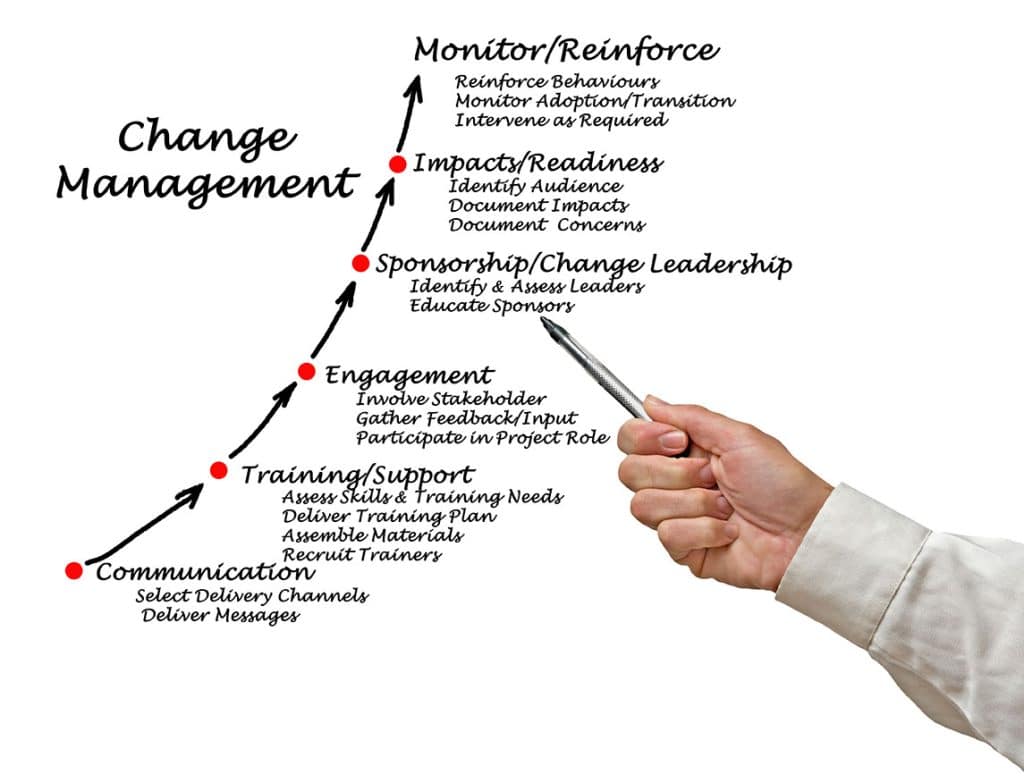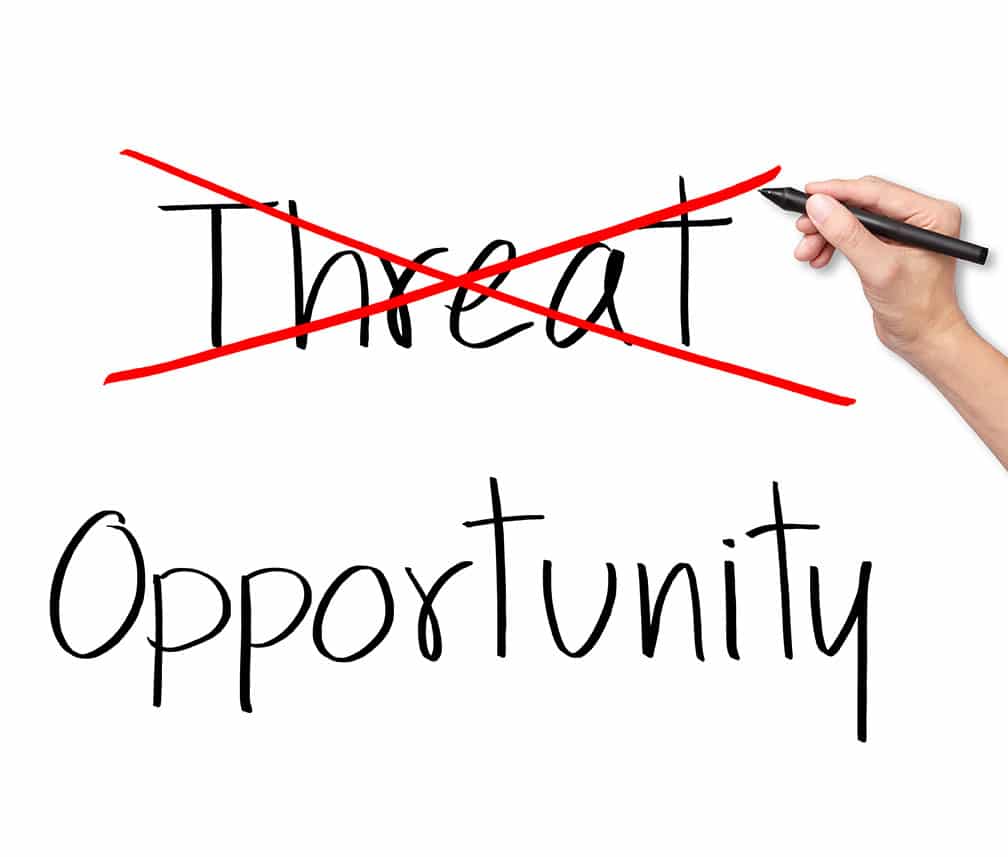Change has quickly become the new normal. With so much change, having the skills for managing change in the workplace has become more valuable than ever. In today’s article, we provide seven critical tips leaders should follow when managing change in the workplace:
1. Create a Plan

“By failing to prepare, you are preparing to fail.” Benjamin Franklin
Change management is no easy undertaking. A leader with vision knows preparing a team for change requires careful planning. What will change, when, how, and why. These are just a few considerations you’ll need to plan for. The more organized and prepared you are for change, the easier and more successful your efforts will be.
Be sure to include in your plan:
- How you will communicate change
- What training and support will be provided
- Who with and how will you engage
- What role will leadership play
- How will you track and report on progress
- What will you do to monitor and promote change
2. Carefully Navigate Roadblocks

“You have to see every potential roadblock as an opportunity and a benefit.” – Suze Orman
There will always be roadblocks, they are unavoidable. How you navigate roadblocks is the key to overcoming them. As you plan your change management approach, carefully consider potential roadblocks. Also, establish a plan for how you will overcome challenges as they pop up. If you plan carefully, you might even be able to turn a roadblock into a golden opportunity to promote change and resiliency in your workplace.
Common roadblocks:
- Lack of Collaboration
- Too Few of Resources
- Poor Prioritization
- Resistance to Change
- Lack of Leadership Engagement
- Too Many Ideas
- Burnout
- New Technology
- Tunnel Vision
3. Over Communicate

Communication is the key to successfully managing change in the workplace. People will have questions, concerns, ideas, and fears. Change management communication will help your team understand what is changing and why, and how it will specifically affect them. This communication is critical in assisting people in moving from their current state to the intended “future state.”
- Create a communication strategy
- Define the change and vision for the future
- Be specific
- Communicate often
- Listen to feedback
- Prepare for resistance
4. Remember the Transition Curve

The Transition Curve is a popular and powerful model used to understand the stages of personal transition and organizational change. It helps you predict how people will react to change so that you can help them make their own personal transitions and be assured that they have the help and support they need.
The Transition Curve:
- Ending
- Anger, denial, shock
- Fear, frustration, confusion, stress
- Approach avoidance
- Impatience, acceptance, scepticism, creativity
- Hope, energy, anxiety, enthusiasm
- New beginning
5. Use An Open-Minded Leadership Style

Change is messy and unpredictable, especially in the workplace. Letting go of the way things have been done is intimidating and scary. Support your team by embracing an open-minded leadership style. Transforming the workplace requires the support of your entire team. Carefully consider not just your own ideas, but also the ideas of your team.
Above all, if you want people to be a part of the change, you will need to include them in the process.
Qualities of an open-minded leader:
- Willingness to bend when necessary
- Flexibility
- Listen attentively
- Provide thoughtful feedback
- Logical thinking
- Courage
6. Lead with Empathy

“Be kind whenever possible. It is always possible.” – Dalai Lama
An empathetic leader can change her team’s perspective to help them see change, not as a threat, but as an exciting opportunity. Leading with empathy allows you to better understand your team, create an environment of open communication, and encourage effective feedback. Empathetic leadership is especially important during times of change when people often feel most vulnerable.
In an insightful article on how to lead with empathy, Lolly Daskal outlines eight attributes every empathetic leader must embrace:
- Truly listen
- Don’t interrupt
- Be fully present
- Leave judgment behind
- Watch body language
- Encourage the quiet ones
- Take a personal interest
- Lead from within
7. Promote a Growth Mindset

After decades of research, world-renowned Stanford University psychologist Carol S. Dweck, Ph.D., discovered a simple but groundbreaking idea: the power of mindset. Almost every area of human endeavor can be dramatically influenced by how we think about our talents and abilities. People with a fixed mindset—those who believe that abilities are fixed—are less likely to flourish than those with a growth mindset—those who believe that abilities can be developed. If you want to learn more her book is called: Mindset: The New Psychology of Success.
People with growth mindsets:
- Embrace challenges
- Overcome setbacks
- Learn from criticism
- Celebrate others successes
- Welcome challenges
- Look for opportunities to grow
Bonus Tip: Get a Professional Coach.

Finally, if you find yourself managing change, an excellent coach can help you succeed. With the right coach, you can more easily navigate the turbulent waters of change. With a coach, you get a neutral third party who can give you honest feedback, listen to your ideas, and provide guidance.



